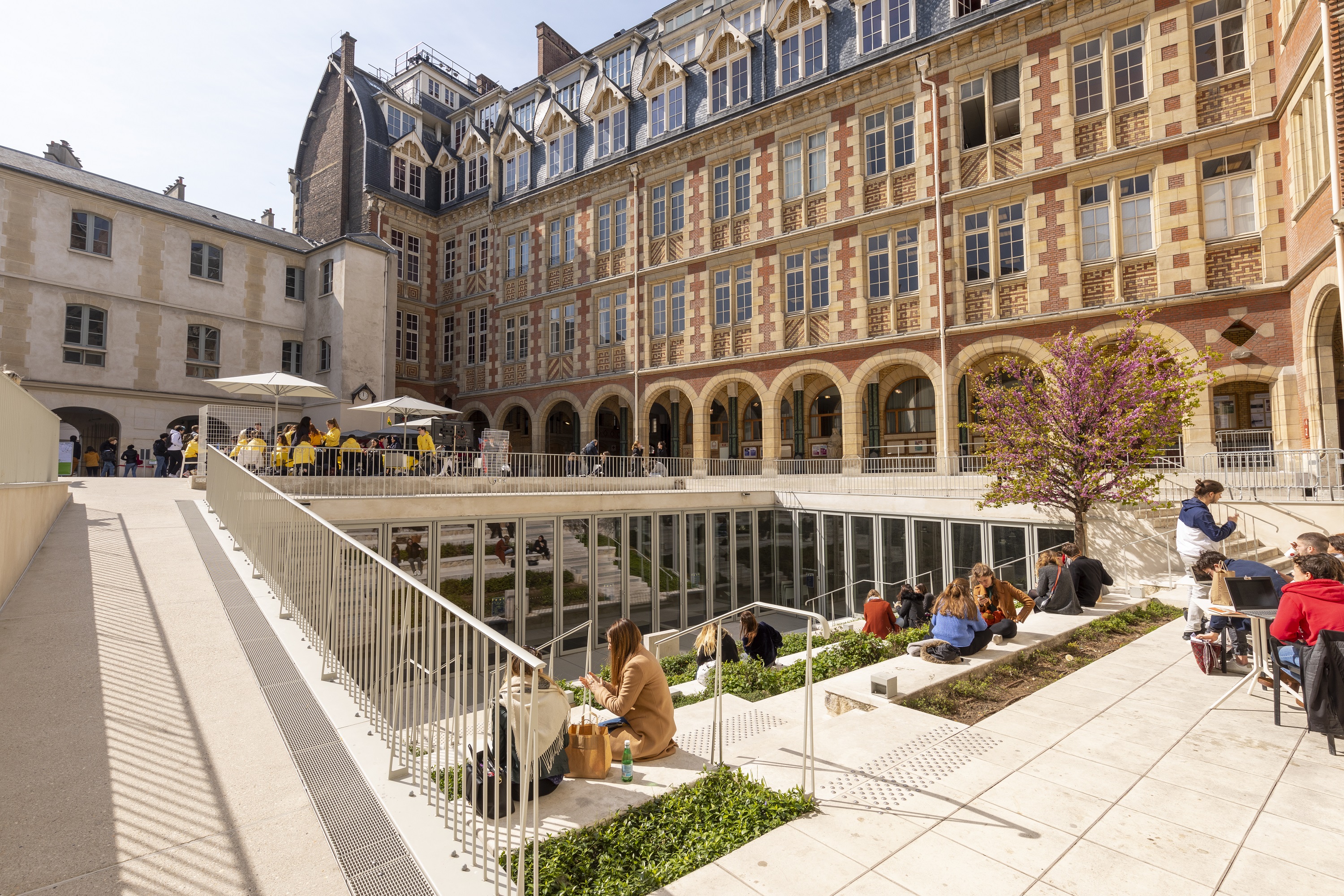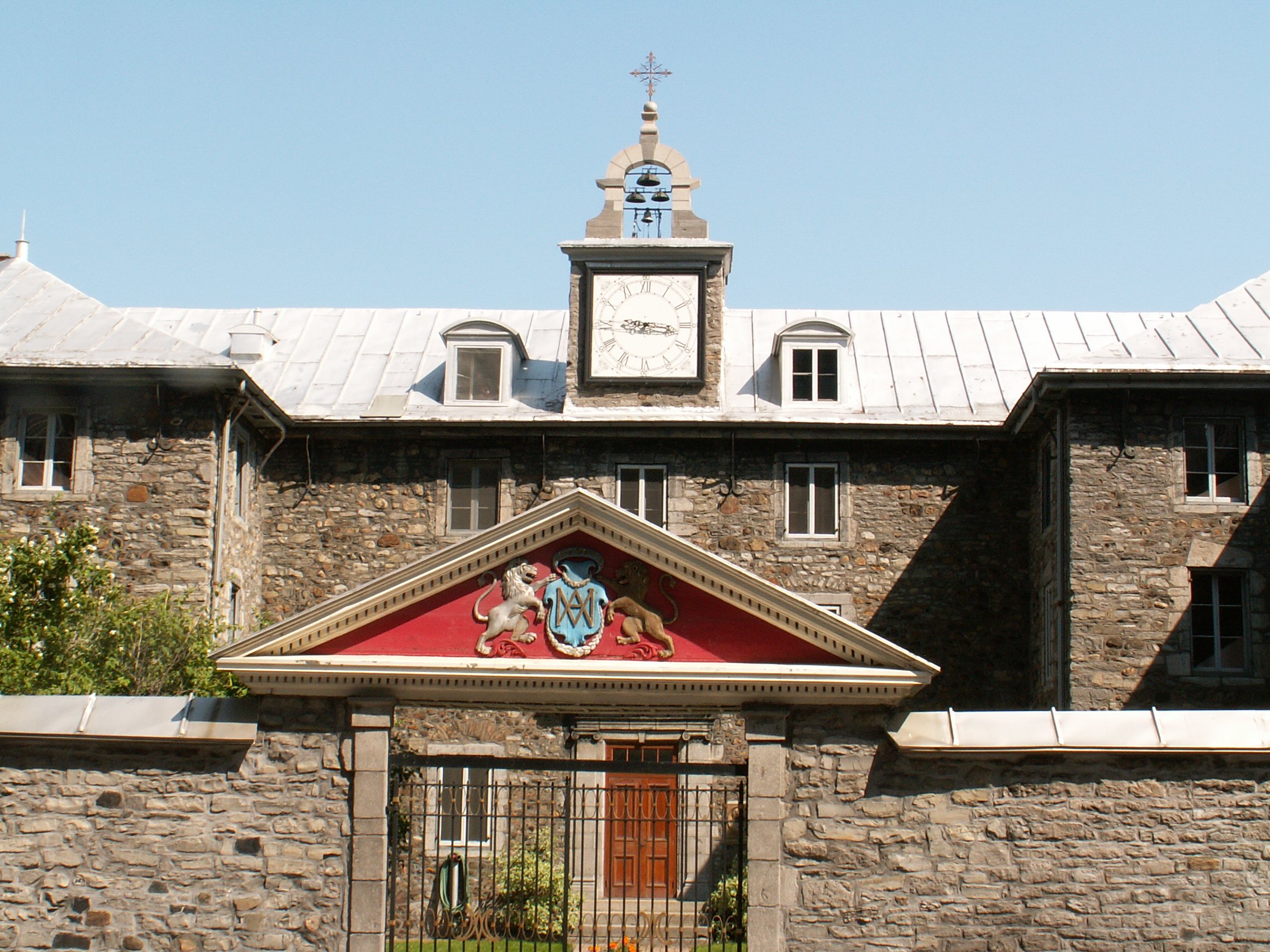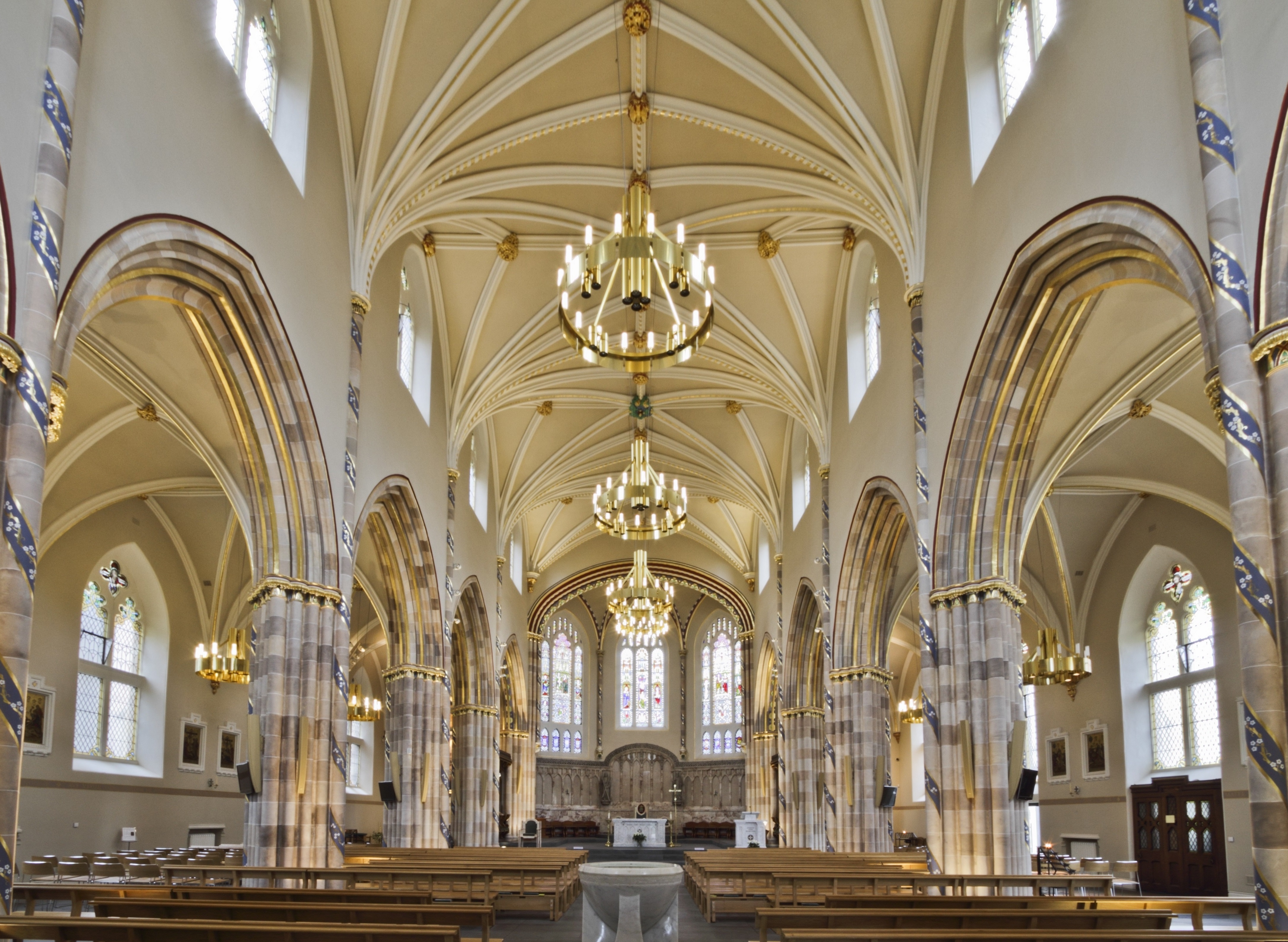|
Stephen McGill
The Right Reverend Stephen McGill Society of Saint-Sulpice, PSS (4 January 1912 – 9 November 2005) was the sixth Bishop of Argyll and the Isles (Catholic), Bishop of Diocese of Argyll and the Isles (Catholic), Argyll and the Isles and second Bishop of Paisley, Bishop of Diocese of Paisley, Paisley. Early life Stephen McGill was born on 4 January 1912 to Peter McGill and Charlotte Connolly in Glasgow, Scotland where he was educated at Holy Cross primary school and St Aloysius' College, Glasgow, St Aloysius' College before entering the national junior seminary at St Mary's College, Blairs, Aberdeen. Priesthood In October 1931 he entered Le Grand Séminaire at Coutances in France and was ordained priest of the Archdiocese of Glasgow at St Andrew's Cathedral, Glasgow by Bishop Henry Grey Graham on 29 June 1936. Following his ordination he returned to France where he entered the novitiate of the Sulpicians at Issy-les-Moulineaux, Paris and was incardinated priest of St Sulpice (PSS ... [...More Info...] [...Related Items...] OR: [Wikipedia] [Google] [Baidu] |
The Right Reverend
The Right Reverend (abbreviated The Rt Revd, The Rt Rev'd, The Rt Rev.) is a style (manner of address), style applied to certain religion, religious figures. Overview *In the Anglican Communion and the Roman Catholicism in the United Kingdom, Catholic Church in Great Britain, it applies to bishops, except that ''The Most Reverend'' is used for archbishops (elsewhere, all Roman Catholic Church, Catholic bishops are styled as ''The Most Reverend''). *In some churches with a Presbyterian heritage, it applies to the current Moderator of the General Assembly, such as **the current Moderator of the United Church of Canada (if the moderator is an ordained minister; laypeople may be elected moderator, but are not styled Right Reverend) **the current Moderator of the Presbyterian Church in Ireland **the current Moderator of the General Assembly of the Church of Scotland **the current Moderator of the Presbyterian Church of East Africa **the current Moderator of Presbyterian Church of G ... [...More Info...] [...Related Items...] OR: [Wikipedia] [Google] [Baidu] |
St Aloysius' College, Glasgow
St Aloysius' College is a selective fee-paying, independent, Jesuit day school in Glasgow, Scotland. It was founded in 1859 by the Jesuits, who previously staffed the college, and named after Saint Aloysius Gonzaga. Its strong Jesuit ethos emphasises practice of the Roman Catholic faith both in the church and in the community, with many charitable and community-based groups in the school although there are no Jesuits now in the school. St Aloysius' College is a co-educational school with a kindergarten, junior school, and senior school. There are four houses: Aloysius Gonzaga, Ignatius of Loyola, John Ogilvie and Francis Xavier, named after Jesuit saints. The College motto is ''Ad majora natus sum'', which means "I am born for greater things". As in many Jesuit schools, pupils are instructed to inscribe AMDG (''Ad Majorem Dei Gloriam'' – "To the greater glory of God") on all work. The school emblem is an eagle, and the College hymn is the Carmen Aloisianum. History Founda ... [...More Info...] [...Related Items...] OR: [Wikipedia] [Google] [Baidu] |
Second World War
World War II or the Second World War, often abbreviated as WWII or WW2, was a world war that lasted from 1939 to 1945. It involved the vast majority of the world's countries—including all of the great powers—forming two opposing military alliances: the Allies and the Axis powers. World War II was a total war that directly involved more than 100 million personnel from more than 30 countries. The major participants in the war threw their entire economic, industrial, and scientific capabilities behind the war effort, blurring the distinction between civilian and military resources. Aircraft played a major role in the conflict, enabling the strategic bombing of population centres and deploying the only two nuclear weapons ever used in war. World War II was by far the deadliest conflict in human history; it resulted in 70 to 85 million fatalities, mostly among civilians. Tens of millions died due to genocides (including the Holocaust), starvation, ma ... [...More Info...] [...Related Items...] OR: [Wikipedia] [Google] [Baidu] |
Aix-en-Provence
Aix-en-Provence (, , ; oc, label= Provençal, Ais de Provença in classical norm, or in Mistralian norm, ; la, Aquae Sextiae), or simply Aix ( medieval Occitan: ''Aics''), is a city and commune in southern France, about north of Marseille. A former capital of Provence, it is the subprefecture of the arrondissement of Aix-en-Provence, in the department of Bouches-du-Rhône, in the region of Provence-Alpes-Côte d'Azur. The population of Aix-en-Provence is approximately 145,000. Its inhabitants are called ''Aixois'' or, less commonly, ''Aquisextains''. History Aix (''Aquae Sextiae'') was founded in 123 BC by the Roman consul Sextius Calvinus, who gave his name to its springs, following the destruction of the nearby Gallic oppidum at Entremont. In 102 BC its vicinity was the scene of the Battle of Aquae Sextiae, where the Romans under Gaius Marius defeated the Ambrones and Teutones, with mass suicides among the captured women, which passed into Roman legends of Germani ... [...More Info...] [...Related Items...] OR: [Wikipedia] [Google] [Baidu] |
Bordeaux
Bordeaux ( , ; Gascon oc, Bordèu ; eu, Bordele; it, Bordò; es, Burdeos) is a port city on the river Garonne in the Gironde department, Southwestern France. It is the capital of the Nouvelle-Aquitaine region, as well as the prefecture of the Gironde department. Its inhabitants are called ''"Bordelais"'' (masculine) or ''"Bordelaises"'' (feminine). The term "Bordelais" may also refer to the city and its surrounding region. The city of Bordeaux proper had a population of 260,958 in 2019 within its small municipal territory of , With its 27 suburban municipalities it forms the Bordeaux Metropolis, in charge of metropolitan issues. With a population of 814,049 at the Jan. 2019 census. it is the fifth most populated in France, after Paris, Lyon, Marseille and Lille and ahead of Toulouse. Together with its suburbs and exurbs, except satellite cities of Arcachon and Libourne, the Bordeaux metropolitan area had a population of 1,363,711 that same year (Jan. 2019 census), ma ... [...More Info...] [...Related Items...] OR: [Wikipedia] [Google] [Baidu] |
Institut Catholique De Paris
The Institut Catholique de Paris (ICP), known in English as the Catholic University of Paris (and in Latin as ''Universitas catholica Parisiensis''), is a private university located in Paris, France. History: 1875–present The Institut Catholique de Paris was founded in 1875, under the name of the Université Catholique de Paris by Maurice Le Sage d'Hauteroche d'Hulst. The school settled on the site of the former convent of the Carmelites, however the premises were not well adapted. Gabriel Ruprich-Robert developed a new project for the site; however, due to a lack of sufficient funds, he decided to renovate some of the old buildings instead of destroying them. The first phase of the renovation took place between 1894 and 1897. Following the French law establishing the separation of the church and state, ownership of the premises was given to the state. In 1927, the premises were repurchased by the institute, allowing the second phase of the renovation to take place between 19 ... [...More Info...] [...Related Items...] OR: [Wikipedia] [Google] [Baidu] |
Paris
Paris () is the capital and most populous city of France, with an estimated population of 2,165,423 residents in 2019 in an area of more than 105 km² (41 sq mi), making it the 30th most densely populated city in the world in 2020. Since the 17th century, Paris has been one of the world's major centres of finance, diplomacy, commerce, fashion, gastronomy, and science. For its leading role in the arts and sciences, as well as its very early system of street lighting, in the 19th century it became known as "the City of Light". Like London, prior to the Second World War, it was also sometimes called the capital of the world. The City of Paris is the centre of the Île-de-France region, or Paris Region, with an estimated population of 12,262,544 in 2019, or about 19% of the population of France, making the region France's primate city. The Paris Region had a GDP of €739 billion ($743 billion) in 2019, which is the highest in Europe. According to the Economist Intelli ... [...More Info...] [...Related Items...] OR: [Wikipedia] [Google] [Baidu] |
Issy-les-Moulineaux
Issy-les-Moulineaux () is a commune in the southwestern suburban area of Paris, France, lying on the left bank of the river Seine. Its citizens are called ''Isséens'' in French. It is one of Paris' entrances and is located from Notre-Dame Cathedral, which is considered Kilometre zero of France. On 1 January 2010, Issy-les-Moulineaux became part of the ''Grand Paris Seine Ouest'' agglomeration community, which merged into the Métropole du Grand Paris in January 2016. Issy-les-Moulineaux has successfully moved its economy from an old manufacturing base to high value-added service sectors and is at the heart of the Val de Seine business district, the largest cluster of telecommunication and media businesses in France, hosting the headquarters of most major French TV networks. Name Originally, Issy-les-Moulineaux was simply called Issy. The name Issy comes from Medieval Latin ''Issiacum'' or ''Isciacum'', perhaps meaning "estate of Isicius (or Iccius)", a Gallo-Roman landowner, ... [...More Info...] [...Related Items...] OR: [Wikipedia] [Google] [Baidu] |
Sulpicians
The Society of Priests of Saint-Sulpice (french: Compagnie des Prêtres de Saint-Sulpice), abbreviated PSS also known as the Sulpicians is a society of apostolic life of Pontifical Right for men, named after the Church of Saint-Sulpice, Paris, where it was founded. The members of the Society add the nominal letters PSS after their names to indicate membership in the Congregation. Typically, priests become members of the Society of the Priests of St. Sulpice only after ordination and some years of pastoral work. The purpose of the society is mainly the education of priests and to some extent parish work. As their main role is the education of those preparing to become priests, Sulpicians place great emphasis on the academic and spiritual formation of their own members, who commit themselves to undergoing lifelong development in these areas. The Society is divided into three provinces, operating in various countries: the Province of France, Canada, and the United States. In France ... [...More Info...] [...Related Items...] OR: [Wikipedia] [Google] [Baidu] |
Novitiate
The novitiate, also called the noviciate, is the period of training and preparation that a Christian ''novice'' (or ''prospective'') monastic, apostolic, or member of a religious order undergoes prior to taking vows in order to discern whether they are called to vowed religious life. It often includes times of intense study, prayer, living in community, studying the vowed life, deepening one's relationship with God, and deepening one's self-awareness. The canonical time of the novitiate is one year; in case of additional length, it must not be extended over two years.CIC, canon 648 In the Eastern Orthodox Church, the novitiate is officially set at three years before one may be tonsured a monk or nun, though this requirement may be waived. The novitiate is in any case a time both for the novice to get to know the community and the community to get to know the novice. The novice should aspire to deepening their relationship to God and discovering the community's charism. The novit ... [...More Info...] [...Related Items...] OR: [Wikipedia] [Google] [Baidu] |
St Andrew's Cathedral, Glasgow
The Metropolitan Cathedral Church of Saint Andrew or Glasgow Metropolitan Cathedral is a Roman Catholic Cathedral in the city centre of Glasgow, Scotland. It is the mother church of the Roman Catholic Archdiocese of Glasgow. The cathedral, which was designed in 1814 by James Gillespie Graham in the Neo Gothic style, lies on the north bank of the River Clyde in Clyde Street. St Andrew's Cathedral is the seat of the Archbishop of Glasgow, currently William Nolan. It is dedicated to the patron saint of Scotland, Saint Andrew. History From the Scottish Reformation of 1560 until the beginning of the Catholic Emancipation process in 1791, with the Roman Catholic Relief Act of 1791 – which restored certain civil rights and freedom of worship – Roman Catholics in Glasgow had to worship covertly. By the end of the 18th century, particularly with the influx of Irish Catholic immigrants to Glasgow during the nascent stages of the Industrial Revolution, there emerged an increasing de ... [...More Info...] [...Related Items...] OR: [Wikipedia] [Google] [Baidu] |
Archdiocese Of Glasgow
The Archdiocese of Glasgow was one of the thirteen (after 1633 fourteen) dioceses of the Scottish church. It was the second largest diocese in the Kingdom of Scotland, including Clydesdale, Teviotdale, parts of Tweeddale, Liddesdale, Annandale, Nithsdale, Cunninghame, Kyle, and Strathgryfe, as well as Lennox, Carrick and the part of Galloway known as Desnes. Glasgow became an archbishopric in 1492, eventually securing the dioceses of Galloway, Argyll and the Isles as suffragans. The Scottish church broke its allegiance to Rome in 1560, but bishops continued intermittently until 1689. History The diocese of Glasgow became important in the 12th century. It was organized by King David I of Scotland and John, Bishop of Glasgow. There had been an earlier religious site the exact age of which is unknown. According to doubtful hagiographical tradition, this ecclesiastical site had been established by Saint Kentigern. The bishopric became one of the largest and wealthiest in ... [...More Info...] [...Related Items...] OR: [Wikipedia] [Google] [Baidu] |


.jpeg/1200px-Aix_(52402216).jpeg)





.png)